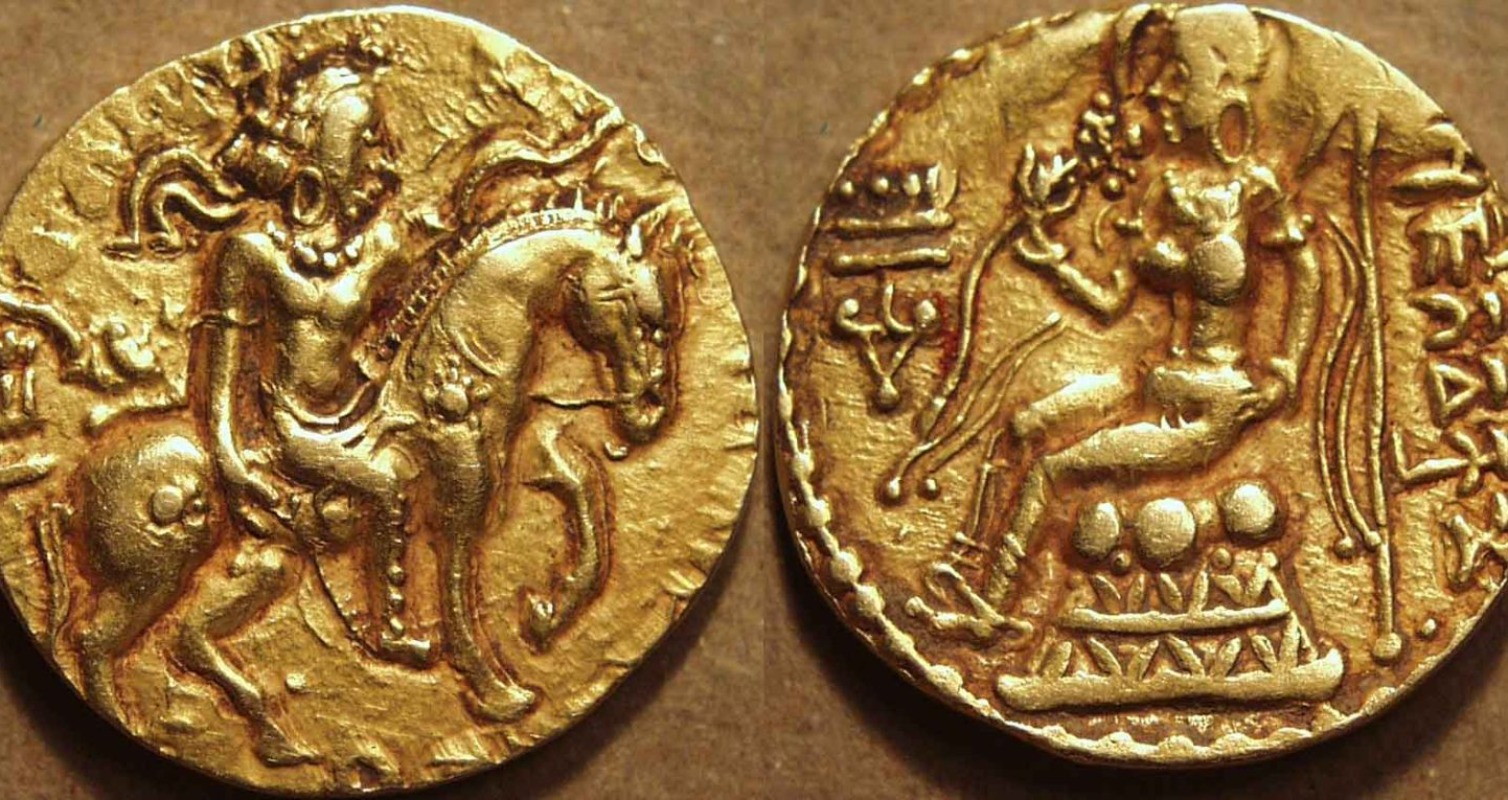Coins were introduced as a method of payment around the 6th or 5th century BCE. The invention of coins is still shrouded in mystery: According to Herdotous, coins were first minted by the Lydians, while Aristotle claims that the first coins were minted by Demodike of Kyrme, the wife of King Midas of Phrygia. Numismatists consider that the first coins were minted on the Greek island of Aegina, either by the local rulers or by king Pheidon of Argos.
Coins were brought to India through the Achaemenid Empire, as well as the successor kingdoms of Alexander the Great. The most beautiful coins of the classical age are said to have been minted by Samudragupta (335-376 CE), who portrayed himself as both conqueror and musician.
The first coins were made of electrum, an alloy of silver and gold.
In China, gold coins were first standardized during the Qin dynasty (221-207 BCE). After the fall of the Qin dynasty, the Han emperors added two other legal tenders: silver coins and “deerskin notes”, a predecessor of paper currency which was a Chinese invention.

